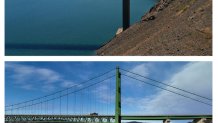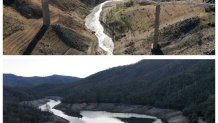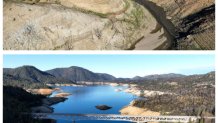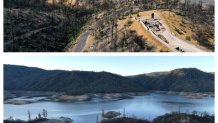The drought which until just three months ago lacerated most of the golden state, has given way to rivers, waterfalls, lakes and reservoirs full of water.
Getty Images
In California, normally “75 percent of the annual precipitation, made up of rain, snow, and hail, falls from November to March,” according to the California Department of Water Resources (DWR).

Getty Images
However, in the last three years, the summers have been increasingly hot and the winters historically dry, bringing the territory to a state of extreme drought.

Getty Images
But this year the panorama is completely different after the impact of 19 atmospheric rivers that began at the end of December 2022.

Getty Images
Currently, the reservoir water reserves are at 106% of its capacity with respect to the average for this time of year. The photos show what were previously desert areas, now with water flows that had not been witnessed in years.

Getty Images
Among them, 12 of the 17 largest reservoirs in California They run into water reserves above their historical average, including Folsom Lake, and “Lake Oroville is currently at 83% capacity with 2.9 million acre-feet of water,” according to the DWR.

Getty Images
Also, the DWR reported this Monday that the snow cover that covers the mountains and mountains of the state, “is one of the largest in history, which alleviates the drought,” but also leaves concerns about flooding once it melts.

Getty Images
“This year’s severe storms and flooding are the latest example of California’s weather becoming more extreme,” said DWR Director Karla Nemeth. “After the three driest years on record and the devastating impacts of drought on communities across the state, DWR moved quickly to responding to flooding and forecasting the next snowmelt. We have provided flood assistance to many communities that just a few months ago were facing severe drought impacts.”

Getty Images
In fact, this year’s storms have wreaked havoc in the state, including flooding in the community of Pájaro and communities in Sacramento, Tulare and Merced counties.

Getty Images
However, the DRW maintains the call to conserve water throughout the state, as “long-term drought conditions in the Colorado River Basin will also continue to affect the water supply for millions of Californians.”

Getty Images

